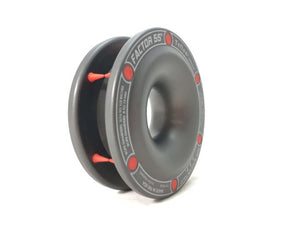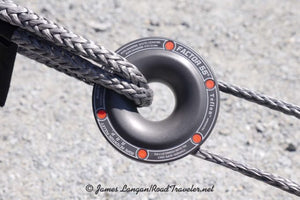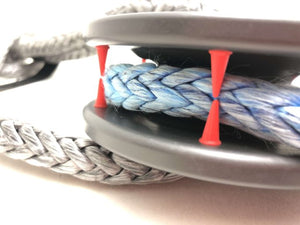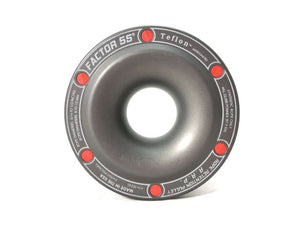Your Cart is Empty
Bergetools - Your shop for 4x4 off-road accessories - suitable for your vehicle and your projects
Bergetools - Your shop for 4x4 off-road accessories - suitable for your vehicle and your projects







Factor55 Rope Retention Pulley
Deflection pulley for synthetic winch ropes. In contrast to other pulleys, equipped with a patented Rope Retension System. This prevents the winch rope from coming off the reel and running over the soft shackle when the tension decreases during the winching process.
From the first use it has been my absolute favorite pulley for synthetic ropes. I don't want any other one and have retired all the others I have used so far.
Light, handy, very robust and the Rope Retention System actually works perfectly! Thanks to the Teflon coating, it is very gentle on ropes and soft shackles.
We have often used them under extreme conditions - perfect!
pulley
Using a deflection pulley, the pulling force of a winch is doubled or the winch only has to provide half the power to tow a vehicle free. In return, towing only takes place at half speed.
The use of a deflection pulley, also known as a snatch block, always makes sense when considerable pulling force is necessary to recover a vehicle, for example when the underbody of the vehicle rests on the ground and all wheels rotate freely.
Because the winch only has to pull with half the force when using a deflection pulley, it also uses significantly less electricity. With a pulling force of 8,000 pounds, a winch with a maximum pulling force of 12,500 pounds needs 246 amps, with 4,000 pounds it only needs 154 amps. A conventional alternator cannot provide such currents, but a significant proportion of them comes from the battery, especially when idling. In addition, the higher the current that flows through the cable from the battery to the winch, the higher the voltage drop on the cable. And this results in lower engine performance. For example, for a 3 meter long cable (6 meters there and back) with a 25 mm² cross section, the voltage drop at 245 amps is 1.03 volts.
A deflection pulley is used as follows: The winch rope is unwound to twice its length, placed around the deflection pulley, led back to the vehicle and hooked onto it. The pulley is attached to a tree or other secure anchor point using a shackle and a tree anchor strap, for example.
Another advantage: The specified maximum pulling force of the winch is only achieved on the last layer of the winch rope, i.e. the longer the rope length is used, the higher the actual pulling force.
I only recommend steel pulleys for winches with steel cables. If a synthetic rope is used, there is a risk that the rope will get stuck between the sidewall and the pulley and be destroyed (except for the ARB 9000).
With synthetic rope I would only ever use a so-called pulley like NMP, the Nakatanenga pulley or the Factor55 with Rope Retention System.
Steel deflection pulleys can be attached to the tree belt with steel or soft shackles, the pulleys for plastic ropes can only be attached with soft shackles !